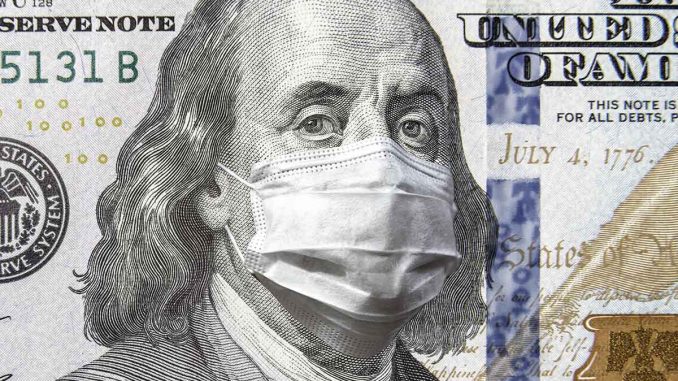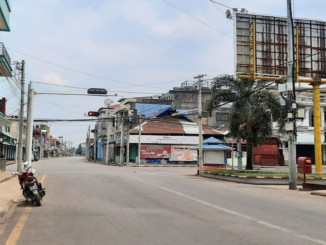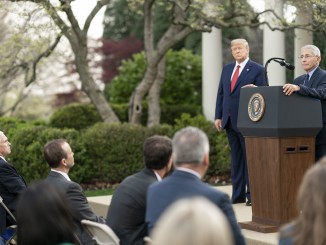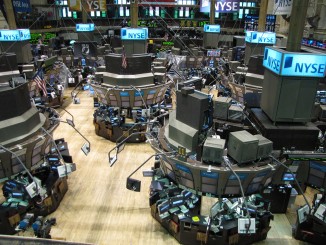
By March 23rd, there were over 370,000 cases of Covid-19, including more than 16,000 deaths, spanning more than 150 countries. And the numbers are continuing to climb at an exponential rate. While in a rational society we would expect the response to match the gravity of the situation, the reality is that this is not the case. The logic of capitalism far supersedes any concern for human well-being, and this can be seen quite evidently in the richest country in the world: the United States.
Though the virus has spread to all 50 states, only nine have so far called for residents to “shelter in place,” with states like New York trying to delay this step as long as possible. This even though it is projected that hospitals will require at least three times more beds to care for the upcoming cases, and health professionals are calling for strong social distancing measures simply to lighten the load. It’s clear that the drive to prevent economic stoppages is more important than preventing the transmission of a disease with a death rate 20 times higher than the seasonal flu.
Meanwhile, nurses are working with infected patients without protection due to mask shortages, or are being asked to reuse their protective equipment between patients, putting themselves and other patients at risks. Yet most auto factories remained open even into mid-March, as an attempt to prevent billions in losses for an industry that is only years post-bailout, putting workers at risk and taking up factory space that could be better suited for medical supply production. After all, would it not make more sense to transition these spaces into factories for necessary equipment such as masks and ventilators, which are estimated to be at an insufficient number for what will be needed?
In early February an Apple manufacturer in China announced it would be switching from iPhone production to mask production, so it seems reasonable that other factories have a similar capability, given the will. Except capitalism has no reason or will for protecting human health when profits are being challenged. During WWII factory resources were devoted to producing vehicles and weapons in support of an imperialist war, but it’s clear the same drive doesn’t exist in officials today to help stop the spread of a disease that will hit the poor the hardest.
Additionally, testing is still often limited to the most “at-risk,” which is to be determined by individual clinicians who have the difficult decision of deciding where to allocate their inadequate resources, or to celebrities and the wealthy. Fewer than 125 in one million in the U.S. have been tested, far fewer than most countries who are keeping track. This means we don’t even know the number who have been infected, or could potentially be spreading the disease unknowingly. This lag time is due to the defective way the government handled the testing situation, showing both the inefficient bureaucracy of governmental bodies as well as the inadequacy of the existing healthcare infrastructure.
First, the CDC (Centers for Disease Control and Prevention) only allowed testing of those who had traveled to China or come into direct contact with someone who had, denying testing for people who had symptoms but could not verify direct contact. Stories have since come out of symptomatic individuals who traveled to places with known outbreaks being denied testing, as well as healthcare workers with exposure to infected individuals or relatives of those who had even died from the disease. The CDC knew full well that testing capacity would be overloaded, due to the for-profit healthcare system that focuses on maximizing cost efficiency and space capacity, which would mean insufficient preparation for high influx events such as a global pandemic.
Ironically, this meant undetected cases would lead to further exposure and transmission, heightening the stress on already burdened hospitals. The U.S. only has 2.9 beds per thousand people. Under the CDC’s own projections, up to 21 million people will need to be hospitalized by the end of the year, far surpassing the less than one million beds available.
Second, the CDC devised its own tests for the virus instead of using German-made kits approved by the WHO (World Health Organization), which were in use by other countries around the world. The CDC test kits ended up being faulty, delaying detection yet again. And when other labs began devising tests themselves, even when validated to be effective, the CDC and FDA (Food and Drug Administration) denied them the ability to use them because they hadn’t undergone the slow and expensive federal approval process. Even now, with accurate testing kits now available, lack of standardized testing equipment across the country’s disjointed healthcare systems is further slowing the ability for rapid, large scale testing.
And this was just the beginning of the response. On March 12, one day after the WHO declared coronavirus to be a worldwide pandemic, the U.S. announced financial protections for those they deem the most vulnerable: the banks. The Federal Reserve announced it would inject up to $1.5 trillion into the financial system, which does little for the average person, but protects the rich and powerful on Wall Street. The Fed claims these are essentially loans to be paid back within one to three months, but with projections that the coronavirus outbreak may last up to 18 months in the U.S., this money is not likely to be returned. In fact, the stock market has been so volatile that just in the last week, rapid drops have trigged trade-stopping circuit breakers multiple times.
The financial sector was not the only sector considered in the crisis, however. On March 18 Trump pledged a bailout for airlines, hotels, and other travel businesses who are taking hits because of reduced travel – as if vacation is a vital resource in a country where more than half of Americans avoid doing recreational activities because they can’t afford to. While concrete decisions have yet to be reached on the scope of such a bailout, a $100 billion coronavirus aid package was also signed into law on the same day, the Families First Coronavirus Response Act. This package, representing less than 10% of the money given to the financial system, fails to meet the steps necessary for ensuring everyday people aren’t devastated by the crisis.
It provides additional emergency paid leave for workers but only those in businesses that have less than 500 employees, or in businesses with less than 50 people that have not opted out. This leaves 35 million Americans at small businesses, and more than 60 million in large companies, beholden to the policies of their employers, with many having no sick leave policies or inadequate ones. With no real protections for workers at places like these, will we be surprised when spread continues as people push themselves to work for fear of losing income, even if sick?
The aid package also only provides payments for up to two weeks, failing to cover workers with long-term health care needs, and offers only about two-thirds of regular payment, an amount that fails to meet financial obligations for people living paycheck to paycheck. Given one in five of Americans has zero or negative wealth, even a slight disruption could spell economic disaster. Health experts recommend 14 days isolation if sick, but these measures are a far cry from allowing workers to actually stay safely at home, and this crisis is not going to resolve in a matter of weeks.
Though unlike standard unemployment relief, self-employed and gig workers under this package will receive benefits. They can get tax credits equal to what they would have received during this period – as though tax credits pay rent or put food on the table. Additionally, the legislation makes exemptions for healthcare workers, who can be excluded from benefits if their employer elects to do so. This means some healthcare workers with coronavirus may not get paid.
The inadequate response to this crisis is a perfect example of the limits of capitalism. The first priority of the economic superpower of the world is not the health and well being of actual human beings, but its own economy and dominance over the rest of the world. Why else would the U.S., amidst rising death tolls in Iran projected to reach into the millions, intensify sanctions that limit their ability to access lifesaving supplies?
It’s why the government was faster to pump money into financial markets than into working peoples’ wallets, which it still has yet to do in any meaningful way. It’s why major U.S. cities, even when experiencing intensifying rates of coronavirus cases, refuse to take economy halting measures to keep people inside and safe. It’s why individuals are still showing up to work sick, because they know they live in a society that will not provide for them if their bodies stop being productive.
The priorities of capitalism are being laid bare for all to see.




